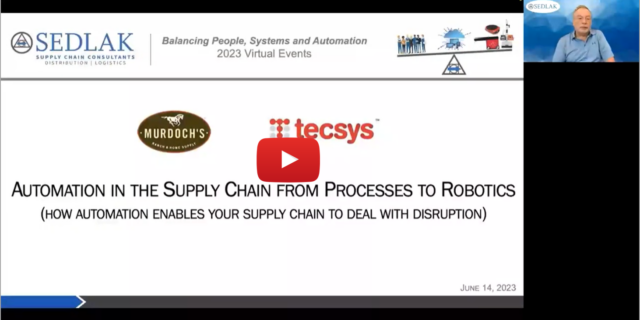Learning New Things in Healthcare Supply Chain
March 30, 2018 By: Senior Management | Topics: Automation & Robotics, HealthcareGolfing great Bobby Jones once said of Jack Nicklaus: “Jack plays a brand of golf with which I am not familiar,” a phrase which Nicklaus himself was to repeat later as he watched the exploits of one Eldrick (Tiger) Woods.
Time changes everything. Sports and the athletes who play them evolve. If a baseball player from the 1920s were to come back today to a major league venue, he would be blown away by the quality of the equipment, by the specialization within the game, by the size and appointments within the stadiums and, of course, by the players’ salaries.
A year and a half ago I came to Sedlak as a 40+ year veteran of the healthcare supply chain. Within my realm, I had garnered a reputation as an industry thought leader (and style-setter). I was an early implementer of many elements of the modern supply chain, including the trial of a very early Automated Guided Vehicle (AGV) application at Baptist Hospital of Miami in 1980. There wasn’t much I didn’t know about the healthcare supply chain.
Or so I thought.
When I walked into Sedlak, I thought my charge was to teach these Industrial Engineers about healthcare and how and why it was different than the retail world in which they had made such a profound mark.
Instead, it is I who have been taught. I have attended scores of “Lunch and Learns” where equipment and other system vendors have come to present to the staff. I have watched and listened and taken notes about acronyms and abbreviations with which I was not familiar, and I have gone on site visits with many of the Sedlak experts including Patrick Sedlak and Will O’Brien, two of the firm’s executives, and more than anything else, I have learned three things:
- Healthcare’s knowledge, understanding and placement of the Supply Chain (SC) in the grand scheme of its operations lags distantly behind that of other industries. For most healthcare organizations, the SC still holds a transactional and operational niche, not a strategic one. Many healthcare SC leaders focus their activities on areas such as contracting, purchased services management, staffing, product standardization and value analysis, management of relationships with physicians and other key “operational influencers,” and spend very little time on the actual flow of “stuff” through the system – pre-planning to disposition or utilization. Consequently, many healthcare organizations’ operations resemble a page from the 1960s.
- Stuff is stuff. Healthcare SC leaders spend their entire careers trying to convince the world around them that the exigencies caused by government regulation, physician demands and the distinctiveness of every single patient from every other patient makes the healthcare SC impossible to manage by the strategies used in the “simpler” realm of retail and industry. I have learned that virtually everything faced by healthcare SC leaders is also faced in other industries and all that is needed is a “Universal Translator,” in this case – me. Once the translation has been completed, stuff becomes stuff and the Industrial Engineers can use their tools to optimize.
- Opportunities are overlooked. In baseball, four straight singles will produce at least one run, yet everyone honors the home run hitter. A good analysis of current logistics, courier services and distribution operations will often reveal opportunities to reduce costs associated with those functions by as much as 10-20%.
Sedlak has helped numerous companies in the healthcare industry streamline processes, optimize supply chain operations, and achieve cost savings. To learn more, complete the Contact Us form below.







